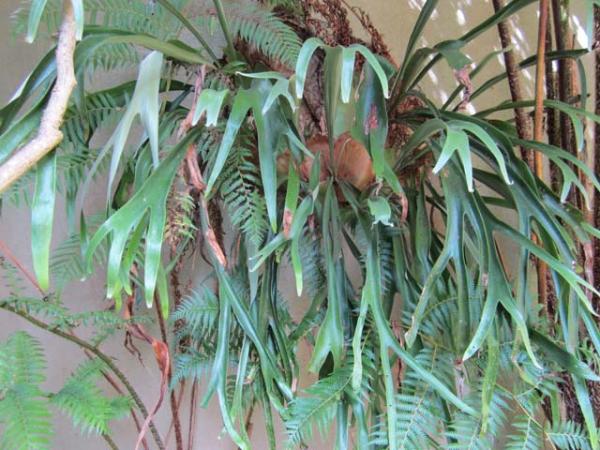Array
(
[0] => Array
(
[id] => 455
[is_published] => 1
[websiteID] => 5
[url] => /gardening/lawn-to-envy-in-6-easy-steps.php
[page_status] => Published
[number_of_ads] => 1
[can_use_editor] => 1
[last_modified_date] => 2013-09-16 00:00:00
[last_modified_by] => Alan
[checked_for_duplicate_content] =>
[title] => A lawn to envy in 6 easy steps
[heading] => A lawn to envy in 6 easy steps
[meta_description] => Six step lawn maintenance guide.
[article_category_1] => Gardening
[article_category_2] =>
[article_category_3] =>
[article_category_4] =>
[article_category_5] =>
[business_category_1] => Landscaper
[business_category_2] => Nursery
[business_category_3] => Garden Designer
[business_category_4] => Landscape Architect
[business_category_5] =>
[number_of_google_mrecs] =>
[show_google_ad_bottom_of_page] =>
[show_get_quotes_top_of_page] =>
[show_get_quotes_rhs_of_page] =>
[show_directory_search_widget] =>
[show_trending_content_widget] =>
[show_facebook_widget] =>
[show_further_reading_section] => 1
[show_sponsors_section] => 0
[show_top_article_ad] => 1
)
[1] => Array
(
[id] => 410
[is_published] => 1
[websiteID] => 5
[url] => /articles/external-privacy-screens.php
[page_status] => Published
[number_of_ads] => 2
[can_use_editor] => 1
[last_modified_date] => 2013-09-10 00:00:00
[last_modified_by] => Alan
[checked_for_duplicate_content] =>
[title] => External privacy screens
[heading] => External privacy screens
[meta_description] => External privacy screens began to appear in Australian residential and commercial building during the 1950's and 1960's, as a direct result of high density living and higher incomes. For more information and some examples read this article.
[article_category_1] => Landscaping
[article_category_2] =>
[article_category_3] =>
[article_category_4] =>
[article_category_5] =>
[business_category_1] => Landscaper
[business_category_2] => Nursery
[business_category_3] => Garden Designer
[business_category_4] => Landscape Architect
[business_category_5] =>
[number_of_google_mrecs] => 1
[show_google_ad_bottom_of_page] => 1
[show_get_quotes_top_of_page] => 1
[show_get_quotes_rhs_of_page] => 1
[show_directory_search_widget] => 1
[show_trending_content_widget] => 1
[show_facebook_widget] => 1
[show_further_reading_section] => 1
[show_sponsors_section] => 1
[show_top_article_ad] => 1
)
[2] => Array
(
[id] => 6
[is_published] => 1
[websiteID] => 5
[url] => /landscaping/garden-themes.php
[page_status] => Published
[number_of_ads] => 4
[can_use_editor] => 1
[last_modified_date] => 2013-09-10 00:00:00
[last_modified_by] => Alan
[checked_for_duplicate_content] =>
[title] => Garden Themes
[heading] => Garden Themes
[meta_description] => This article describes various garden themes that should work well within Australia.
[article_category_1] => Landscaping
[article_category_2] => Gardening
[article_category_3] =>
[article_category_4] =>
[article_category_5] =>
[business_category_1] => Landscaper
[business_category_2] => Nursery
[business_category_3] => Garden Designer
[business_category_4] => Landscape Architect
[business_category_5] =>
[number_of_google_mrecs] => 1
[show_google_ad_bottom_of_page] => 1
[show_get_quotes_top_of_page] => 1
[show_get_quotes_rhs_of_page] => 1
[show_directory_search_widget] => 1
[show_trending_content_widget] => 1
[show_facebook_widget] => 1
[show_further_reading_section] => 1
[show_sponsors_section] => 0
[show_top_article_ad] => 1
)
[3] => Array
(
[id] => 7
[is_published] => 1
[websiteID] => 5
[url] => /landscaping/gabion-walls.php
[page_status] => Published
[number_of_ads] => 2
[can_use_editor] => 1
[last_modified_date] => 2013-09-10 00:00:00
[last_modified_by] => Alan
[checked_for_duplicate_content] =>
[title] => Stone Gabion walls and fencing
[heading] => Stone Gabion fencing and retaining walls
[meta_description] => Gabion is a wire basket or wire form, filled with stones and shaped into a fence or retaining wall type structure. Read this article to learn more.
[article_category_1] => Landscaping
[article_category_2] =>
[article_category_3] =>
[article_category_4] =>
[article_category_5] =>
[business_category_1] => Landscaper
[business_category_2] => Nursery
[business_category_3] => Garden Designer
[business_category_4] => Landscape Architect
[business_category_5] =>
[number_of_google_mrecs] => 1
[show_google_ad_bottom_of_page] => 1
[show_get_quotes_top_of_page] => 1
[show_get_quotes_rhs_of_page] => 1
[show_directory_search_widget] => 1
[show_trending_content_widget] => 1
[show_facebook_widget] => 1
[show_further_reading_section] => 1
[show_sponsors_section] => 1
[show_top_article_ad] => 1
)
)
Helpful articles
A lawn to envy in 6 easy steps. Six step lawn maintenance guide.
External privacy screens. External privacy screens began to appear in Australian residential and commercial building during the 1950's and 1960's, as a direct result of high density living and higher incomes. For more information and some examples read this article.
Garden Themes. This article describes various garden themes that should work well within Australia.
Stone Gabion fencing and retaining walls. Gabion is a wire basket or wire form, filled with stones and shaped into a fence or retaining wall type structure. Read this article to learn more.
Plant description
The elkhorn fern, or Platycerium bifurcatum, is an epiphytic fern with a distinctive and decorative form of growth. The fern grows from a collection of plantlets, which attach to the host tree. Each of these smaller plants has a central nest frond, and this central nest sends out long antler shaped fronds. The plant can become quite large as it grows new plantlets. Elkhorns are native to coastal Queensland and NSW.
Elkhorn ferns need a shady spot and like to be kept moist. They are not frost hardy.
Propagation is by division of the plantlets, or by spores. Single plantlets or a large clump can be separated with a knife or trowel. This is then tied to the new spot, either onto a board or directly onto a tree. Some leaf mold should be placed into the gap between the fern and the host. The fern should be kept moist till it establishes. Spores can also be collected from mature fronds. The spores resemble brown felty growths under the mature fronds, and these can be collected by placing a section of frond into a paper bag. When the spores are shed from the frond, they look like brown dust. These are then sown onto sterilised coir and covered with glass.
Further reading: Top ten native plants and
Best natives for pots and small gardens (articles written by native plant expert and horticulturalist Angus Stewart).
Additional plant information
Flowers
Flower colour: not specified
Flowering season: not specified
Plant size
Maximum height: 1.5 metres
Minimum height: not specified
Maximum width: 2 metres
Minimum width: not specified
Sunlight, frost & salt tolerance
Will tolerate partial sunlight.
Light frost tolerance.
Plant is not salt tolerant.
Fauna attracting?
Not specified.
Climate
This plant species will grow in the following climates: temperate, subtropical, tropical.
Soil types & conditions
Loam: not specified.
Clay: not specified.
Sand: not specified.
Pests
Mealy bug
Miscellaneous information
Native to: Australia.
Planting season: not specified.
Types of fertiliser: not specified.
Find a nursery
Search for another plant

